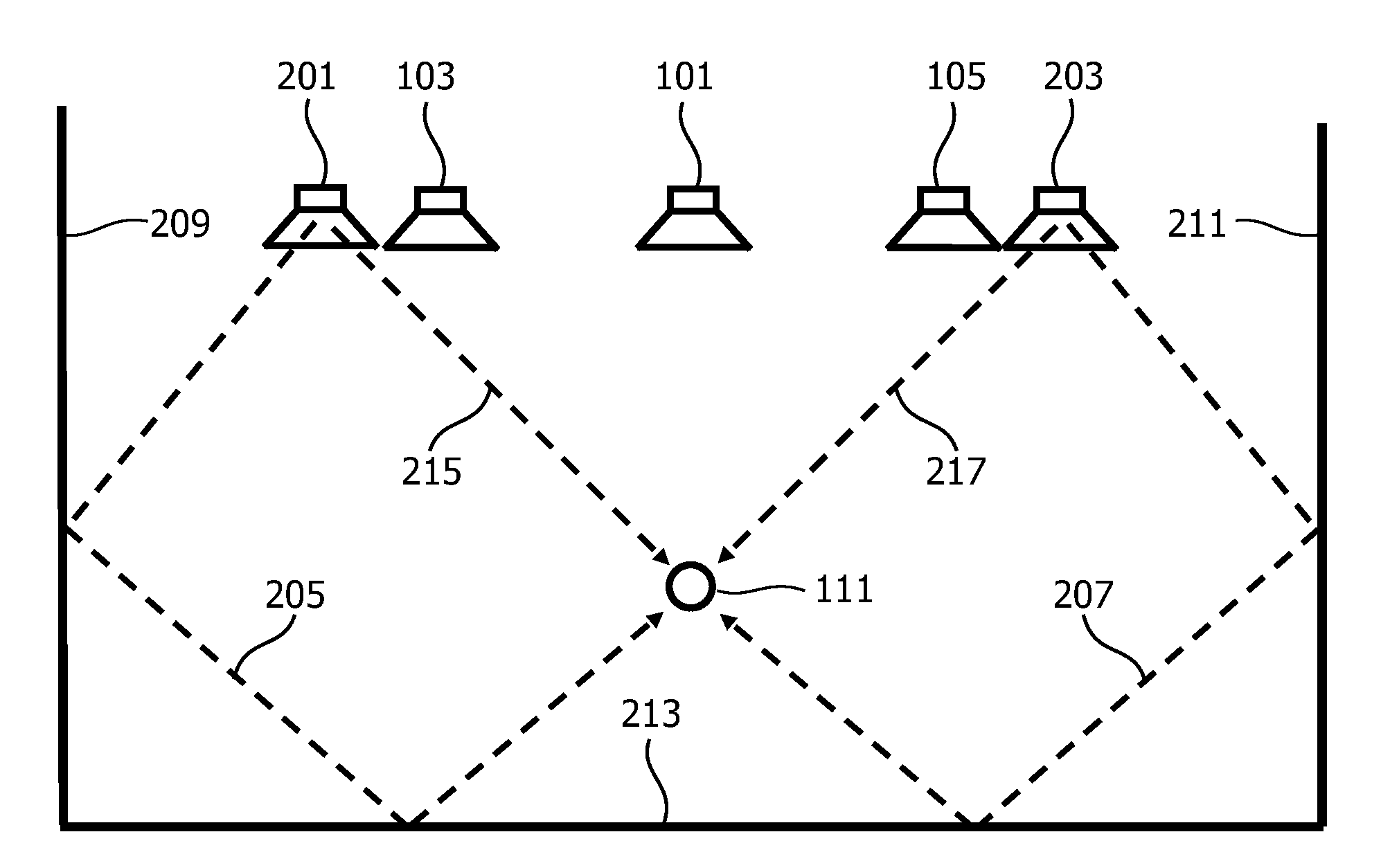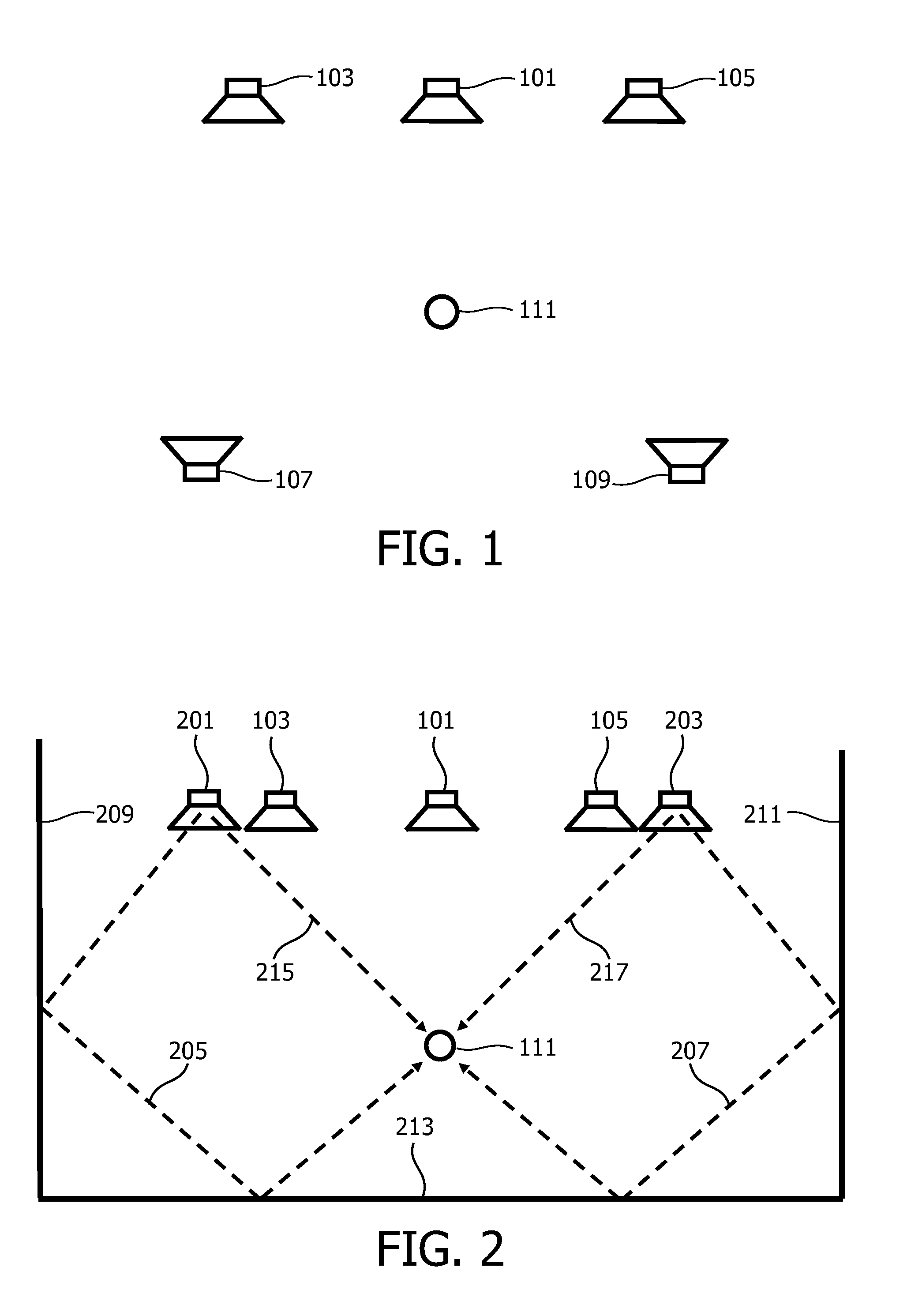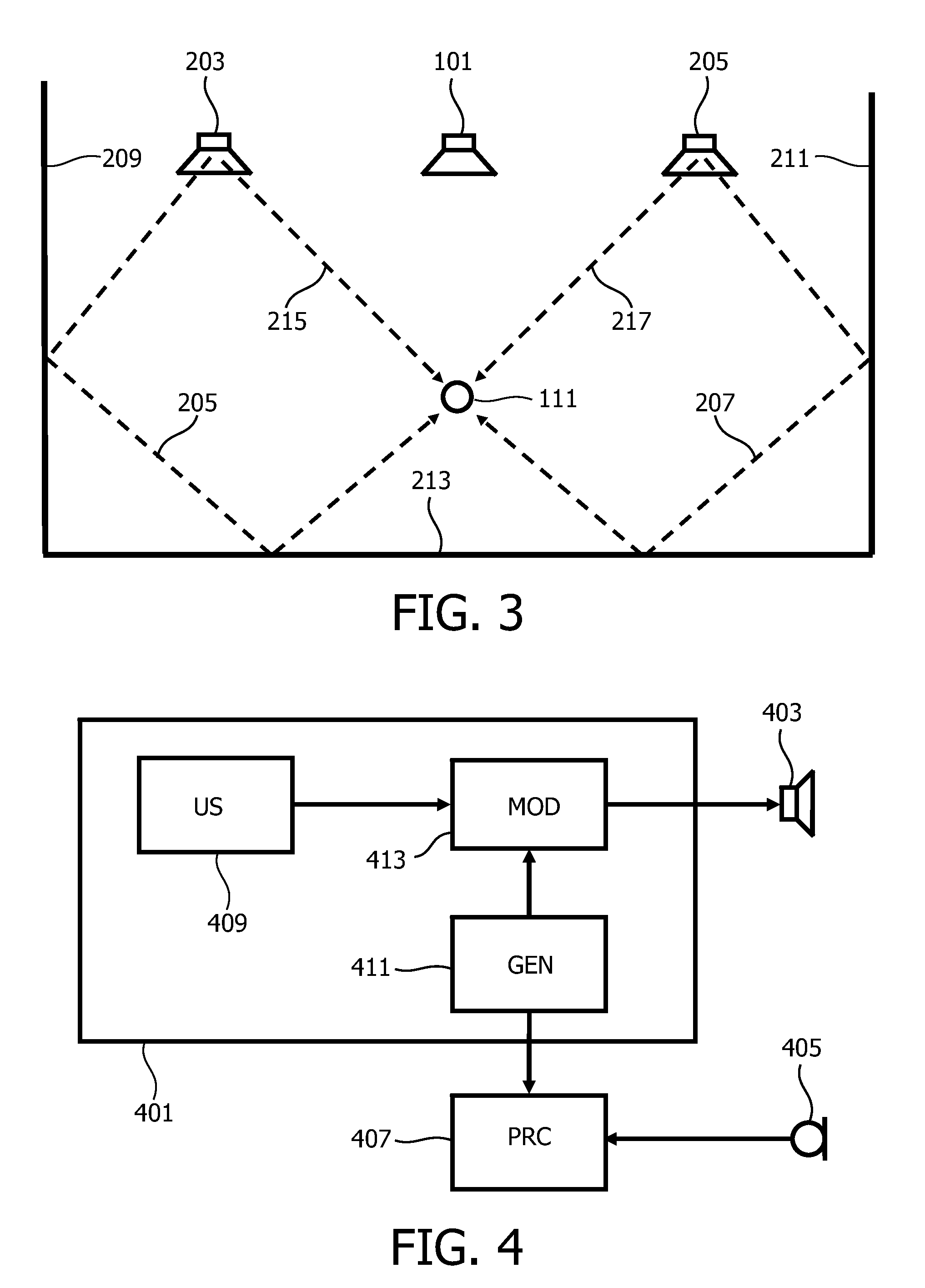Distance estimation using sound signals
a technology of distance estimation and sound signals, applied in the direction of loudspeakers, using reradiation, instruments, etc., can solve the problems of unsatisfactory amount of effort on the part of users, subject to user error, and conventional loudspeaker arrays can only produce highly directional sound beams over a limited frequency range, so as to improve sound reproduction
- Summary
- Abstract
- Description
- Claims
- Application Information
AI Technical Summary
Benefits of technology
Problems solved by technology
Method used
Image
Examples
Embodiment Construction
[0064]The following description focuses on embodiments of the invention applicable to a calibration of a spatial sound reproduction system based on an audio environment geometry determined from distance measurements. However, it will be appreciated that the invention is not limited to this application but may be applied in many other scenarios and for many other applications.
[0065]FIG. 1 illustrates a speaker system setup for a conventional five channel surround sound spatial sound reproduction system, such as a home cinema system. The system comprises a center speaker 101 providing a center front channel, a left front speaker 103 providing a left front channel, a right front speaker 105 providing a right front channel, a left rear speaker 107 providing a left rear channel, and a right rear speaker 109 providing a right rear channel. The five speakers 101-109 together provide a spatial sound experience at a listening position 111 and allow a listener at this location to experience a...
PUM
 Login to View More
Login to View More Abstract
Description
Claims
Application Information
 Login to View More
Login to View More - R&D
- Intellectual Property
- Life Sciences
- Materials
- Tech Scout
- Unparalleled Data Quality
- Higher Quality Content
- 60% Fewer Hallucinations
Browse by: Latest US Patents, China's latest patents, Technical Efficacy Thesaurus, Application Domain, Technology Topic, Popular Technical Reports.
© 2025 PatSnap. All rights reserved.Legal|Privacy policy|Modern Slavery Act Transparency Statement|Sitemap|About US| Contact US: help@patsnap.com



